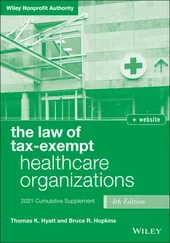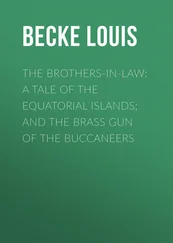Bruce R. Hopkins - The Law of Fundraising
Здесь есть возможность читать онлайн «Bruce R. Hopkins - The Law of Fundraising» — ознакомительный отрывок электронной книги совершенно бесплатно, а после прочтения отрывка купить полную версию. В некоторых случаях можно слушать аудио, скачать через торрент в формате fb2 и присутствует краткое содержание. Жанр: unrecognised, на английском языке. Описание произведения, (предисловие) а так же отзывы посетителей доступны на портале библиотеки ЛибКат.
- Название:The Law of Fundraising
- Автор:
- Жанр:
- Год:неизвестен
- ISBN:нет данных
- Рейтинг книги:4 / 5. Голосов: 1
-
Избранное:Добавить в избранное
- Отзывы:
-
Ваша оценка:
- 80
- 1
- 2
- 3
- 4
- 5
The Law of Fundraising: краткое содержание, описание и аннотация
Предлагаем к чтению аннотацию, описание, краткое содержание или предисловие (зависит от того, что написал сам автор книги «The Law of Fundraising»). Если вы не нашли необходимую информацию о книге — напишите в комментариях, мы постараемся отыскать её.
The Law of Fundraising
The Law of Fundraising
The Law of Fundraising — читать онлайн ознакомительный отрывок
Ниже представлен текст книги, разбитый по страницам. Система сохранения места последней прочитанной страницы, позволяет с удобством читать онлайн бесплатно книгу «The Law of Fundraising», без необходимости каждый раз заново искать на чём Вы остановились. Поставьте закладку, и сможете в любой момент перейти на страницу, на которой закончили чтение.
Интервал:
Закладка:
Statutory regulation of fundraising for charity began with codification of the supervisory and investigatory authority of state attorneys general. Thereafter, there came into being provisions seeking to prevent fraud in charitable solicitations or to promote disclosure of information about these solicitations, or both. Municipal ordinances earlier introduced the concepts of licensing and periodic reporting of charities' fund collection activities, and this approach was adopted by the states as their charitable solicitation acts were written. As the years passed, the statutes became more extensive and stringent; the staffs of the regulatory agencies increased; and regulations, rules, and forms unfolded. In general, the call of one observer, who declaimed that the “evils of inefficient or unscrupulous charitable organizations must be attacked head on by strong government regulation,” 65 was heard.
The process is by no means wholly an instance of government regulation increasing merely for the sake of increase. The nature of organized philanthropy and the perception of it by the public, lawmakers, and regulators have altered dramatically over the past decades.
§ 1.4 CONTEMPORARY REGULATORY CLIMATE
The number of nonprofit organizations remains steadily on the rise. Most of these are exempt from federal and state income and property taxation, many are eligible to attract tax-deductible contributions, and many utilize preferred postal rates. The involvement of these groups in the day-to-day management and change of American life has never been greater.
Concurrent with the rise in state regulation of fundraising for charity has been a significant upsurge in regulatory activity at the federal level by means of administration of the nation's tax and other laws. The process got under way in 1950, when Congress enacted laws taxing the unrelated business income of otherwise tax-exempt organizations. In 1969, the Internal Revenue Code was sizably thickened by a battery of rules defining, regulating, and taxing private foundations, seeking to prevent self-dealing and large stockholdings and to increase grantmaking and public involvement in the affairs of foundations. In 1974, Congress authorized the formation, within the IRS, of a formal administrative and regulatory structure, which has stepped up federal oversight and audit of the nation's nonprofit, including charitable, organizations. In 1987, Congress enacted disclosure laws for noncharitable tax-exempt organizations engaged in fundraising; in 1989, the IRS launched a renewed effort to require disclosures in the course of fundraising for charitable organizations; in 1993, Congress enacted substantiation and disclosure laws applicable to tax-exempt charitable organizations engaged in fundraising; in 2004, Congress provided rules concerning the charitable deduction for contributions of vehicles and intellectual property, and increased reporting for noncash contributions; in 2006, Congress enacted new substantiation rules, stiffer penalties for inflated valuations, and rules concerning charitable gifts of fractional interests in art (and other tangible personal property), clothing and household items, and taxidermy; and in 2017, the standard deduction was essentially doubled.
Still, notwithstanding this rise in government regulation, all is not well. The malady was evidenced several years ago by a blast from a normally rather staid publication, hurling the following charges against some nonprofit organizations—they:
Pay their executives fat salaries and allow them generous fringe benefits.
Award contracts to their trustees and board members.
Serve as fronts for commercial enterprises with which they have “sweetheart” deals.
Enjoy special mailing privileges and property tax breaks that give them a competitive edge against tax-paying establishments.
Engage in wasteful and sometimes fraudulent fundraising with little accountability to the public. 66
The last allegation is the most immediate concern in relation to this book, but this inventory of wrongdoings is indicative of the state of the nonprofit sector as perceived by some. Public regard is essential to the successful functioning of charitable groups; this regard—which has remained high throughout the country's existence—may be eroding in the face of well-publicized abuses and other pressures. 67
This, then, is the dilemma of the charities: abuses appear to be on the increase, triggering greater governmental regulation, which makes operations more difficult for authentic charitable undertakings and creates a public climate that is more critical of these undertakings. The inroads being made by a few unscrupulous and fraudulent operators in tapping the resources of philanthropy are threatening to undermine the seriously needed solicitation programs conducted by legitimate charitable organizations.
Coincidentally, the public is demanding greater accountability from nonprofit, principally charitable, organizations. The consumerism movement is causing individual and corporate donors to be more concerned and sophisticated about the uses of their gift dollars. The emphasis now is on disclosure; donors—prospective and actual—are demonstrating a greater proclivity to inquire of federal, state, and local agencies, lawmakers, independent “watchdog” agencies, and the philanthropic community itself about the fundraising and fund-expenditure practices of charitable organizations.
In this age, where taxation is generally increasing, taxpayers often lack sympathy for and even resent organizations that do not pay tax. Greater understanding of the principle that taxes forgone by one entity must be made up by others may be fostering a public attitude toward nonprofits that is somewhat less lofty than that captured by concepts of voluntarism and pluralism. Likewise, the lure of the standard deduction (now used by a substantial majority of taxpayers) is pulling people away from deductible charitable giving, thereby severing still another traditional nexus between Americans and their charities.
Therefore, in the face of seemingly inadequate disclosure of meaningful information to the public, excessive administrative and fundraising costs, and insufficient portions of the proceeds of charitable gifts passing for charitable purposes, government regulation of fundraising for charity is thriving. Some states that currently lack a comprehensive charitable solicitation act are engaged in the process of trying to enact one. Many states with a charitable solicitation act may be toughening it, either by amending the act or by increasing reporting and similar regulatory burdens. Although the drive for a federal charitable solicitations statute has abated, the IRS continues to regulate in this field, augmented quite frequently by the courts.
Despite all this activity, the pressure for still more regulation continues, perhaps ultimately to be manifested in some form of a federal charitable solicitations statute. The drive for such a law, now dormant, may be awaiting only the spark of a well-publicized charity scandal to trigger action by Congress. Part of the interest in a federal law in this field derives from dissatisfaction with the present state-by-state regulatory scheme. Critics voice a variety of complaints about the present reach of federal and state regulation:
There is no requirement (as there is for private foundations and certain supporting organizations) that public charities annually distribute a portion of their funds for charitable purposes.
There are no common requirements regarding state registration, licensing, periodic reporting, disclosure of financial information, and limitations on compensation of fundraisers.
There are no uniform accounting standards for public charities imposed by law.
Some charitable and other nonprofit organizations are escaping taxation of unrelated activities, in part by portraying those activities as fundraising.
Читать дальшеИнтервал:
Закладка:
Похожие книги на «The Law of Fundraising»
Представляем Вашему вниманию похожие книги на «The Law of Fundraising» списком для выбора. Мы отобрали схожую по названию и смыслу литературу в надежде предоставить читателям больше вариантов отыскать новые, интересные, ещё непрочитанные произведения.
Обсуждение, отзывы о книге «The Law of Fundraising» и просто собственные мнения читателей. Оставьте ваши комментарии, напишите, что Вы думаете о произведении, его смысле или главных героях. Укажите что конкретно понравилось, а что нет, и почему Вы так считаете.












